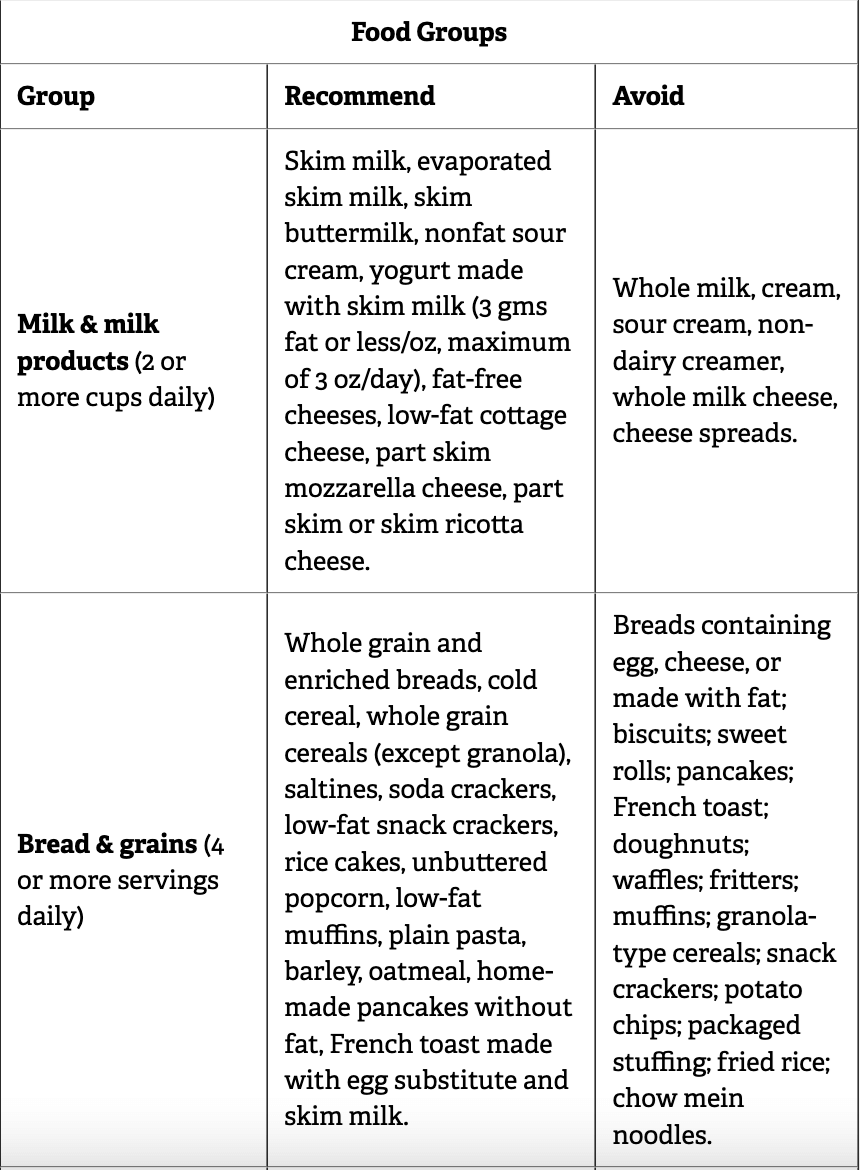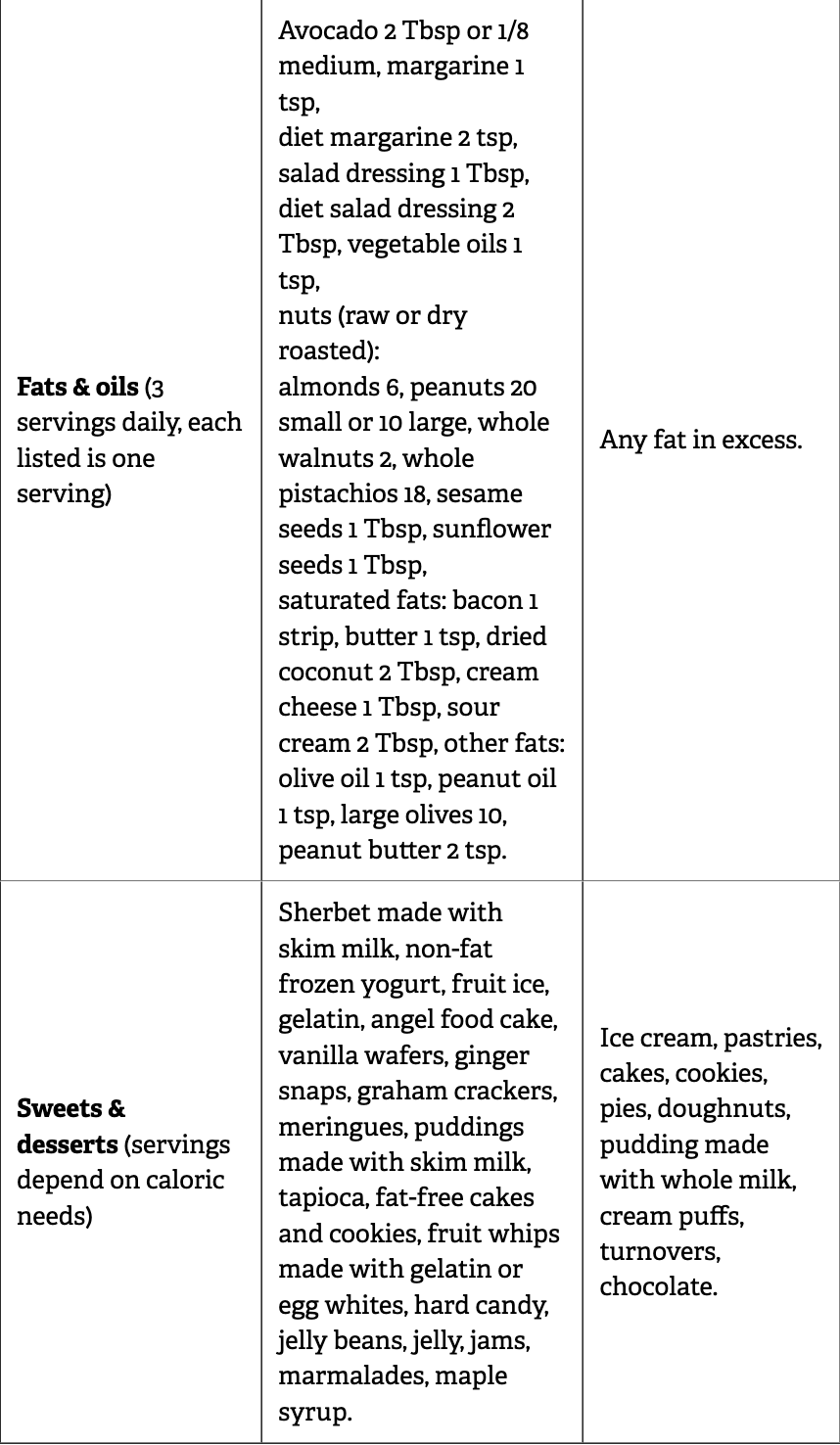Purpose
For a regular, healthy diet, it is recommended that of the total calories you eat, no more than 30% should come from fat. However, certain diseases and medical conditions can make it difficult for the body to tolerate even that much fat, so a low-fat diet may help people with these conditions.
Gallbladder Disease: Bile secreted from the gallbladder helps the body break down and absorb fats. When gallstones or gallbladder diseases are present, a low-fat diet is often used to prevent complications.
Delayed stomach emptying (Gastroparesis) is a condition in which the stomach empties food into the intestine too slowly. This can cause bloating, nausea, and even vomiting. Normally, fat in foods delays stomach emptying, so fats make gastroparesis worse.
Diarrhea can be caused by many conditions. When it occurs, it can be aggravated by eating fatty foods.
Malabsorption of nutrients: Absorption is the transfer of nutrients into the bloodstream from the intestine. In some diseases of the pancreas and small intestine, patients have trouble absorbing nutrients from the diet, including fat. A low-fat diet may help to control symptoms until the cause of malabsorption can be diagnosed.
Fatty Liver: For a number of reasons, fat may accumulate in the liver. Fat is not normally stored in the liver, and in some cases this can cause damage to the liver. A low fat diet and weight reduction may be helpful.
Nutrition Facts
In most cases, this diet provides all the nutrients required by the National Research Council’s Recommended Dietary Allowances (RDA). In some cases, however, the physician may prescribe supplements. Women of childbearing age and those people with malabsorption may need to take certain vitamin and/or mineral supplements.
Special Considerations
1. Be careful how foods are prepared. Trim all visible fat from meats. Bake, steam, or broil meats and fish instead of frying. Toppings for potatoes and pastas should contain no fat above the three allowed daily servings.
2. This low-fat diet should be used until the underlying medical condition is controlled or corrected. The physician will give any individual instructions, and tell you when you no longer need to use the low-fat diet.




